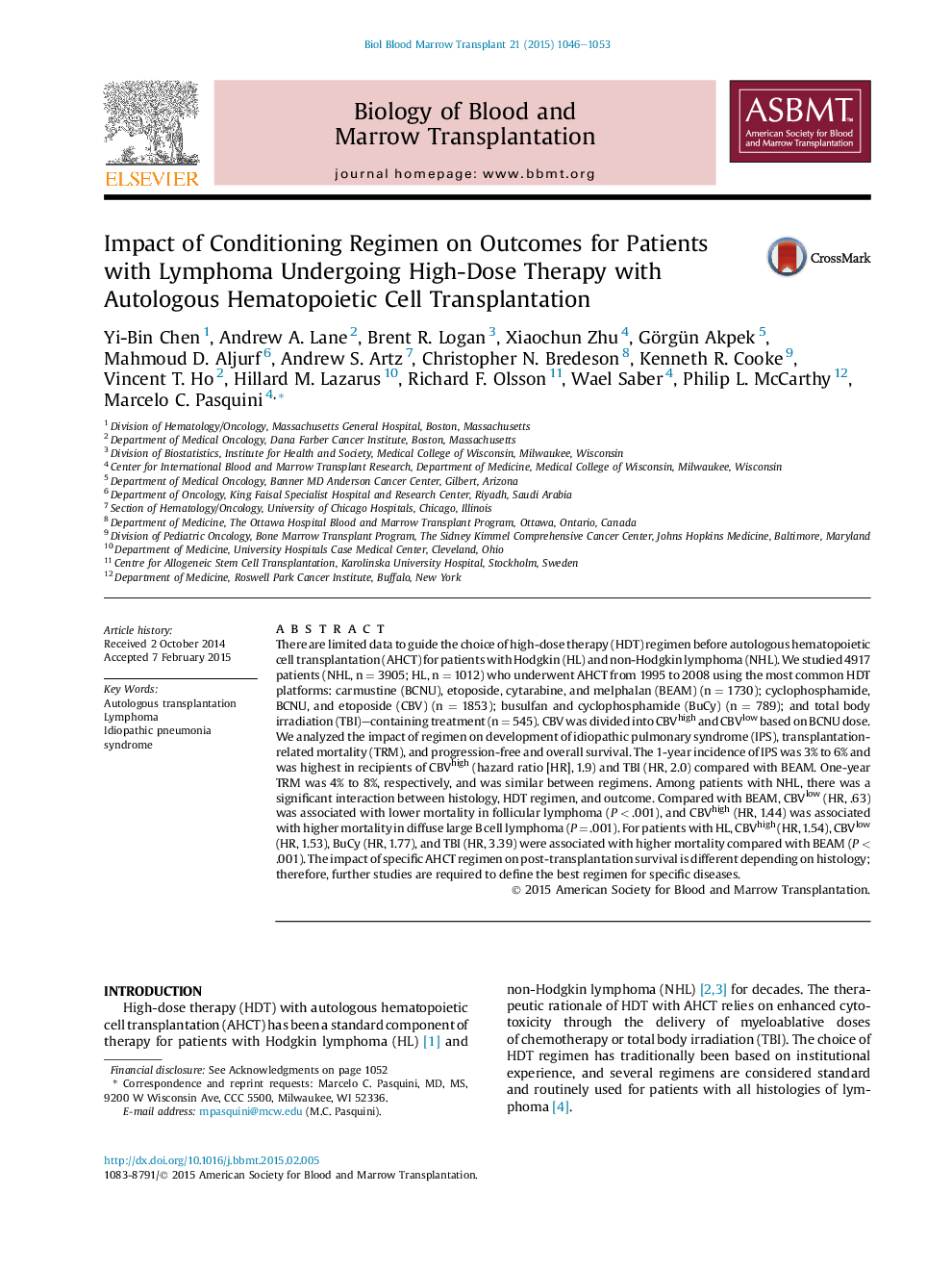| Article ID | Journal | Published Year | Pages | File Type |
|---|---|---|---|---|
| 2101551 | Biology of Blood and Marrow Transplantation | 2015 | 8 Pages |
•BCNU, etoposide, cytarabine, and melphalan (BEAM); cyclophosphamide, carmustine (BCNU), and etoposide (CBV); busulfan and cyclophosphamide; and total body irradiation had similar rates of transplantation-related mortality after autologous hematopoietic cell transplantation for lymphoma.•For follicular lymphoma, lower-dose BCNU CBV, resulted in best survival outcomes.•For Hodgkin lymphoma, BEAM was superior to all other regimens.
There are limited data to guide the choice of high-dose therapy (HDT) regimen before autologous hematopoietic cell transplantation (AHCT) for patients with Hodgkin (HL) and non-Hodgkin lymphoma (NHL). We studied 4917 patients (NHL, n = 3905; HL, n = 1012) who underwent AHCT from 1995 to 2008 using the most common HDT platforms: carmustine (BCNU), etoposide, cytarabine, and melphalan (BEAM) (n = 1730); cyclophosphamide, BCNU, and etoposide (CBV) (n = 1853); busulfan and cyclophosphamide (BuCy) (n = 789); and total body irradiation (TBI)–containing treatment (n = 545). CBV was divided into CBVhigh and CBVlow based on BCNU dose. We analyzed the impact of regimen on development of idiopathic pulmonary syndrome (IPS), transplantation-related mortality (TRM), and progression-free and overall survival. The 1-year incidence of IPS was 3% to 6% and was highest in recipients of CBVhigh (hazard ratio [HR], 1.9) and TBI (HR, 2.0) compared with BEAM. One-year TRM was 4% to 8%, respectively, and was similar between regimens. Among patients with NHL, there was a significant interaction between histology, HDT regimen, and outcome. Compared with BEAM, CBVlow (HR, .63) was associated with lower mortality in follicular lymphoma (P < .001), and CBVhigh (HR, 1.44) was associated with higher mortality in diffuse large B cell lymphoma (P = .001). For patients with HL, CBVhigh (HR, 1.54), CBVlow (HR, 1.53), BuCy (HR, 1.77), and TBI (HR, 3.39) were associated with higher mortality compared with BEAM (P < .001). The impact of specific AHCT regimen on post-transplantation survival is different depending on histology; therefore, further studies are required to define the best regimen for specific diseases.
